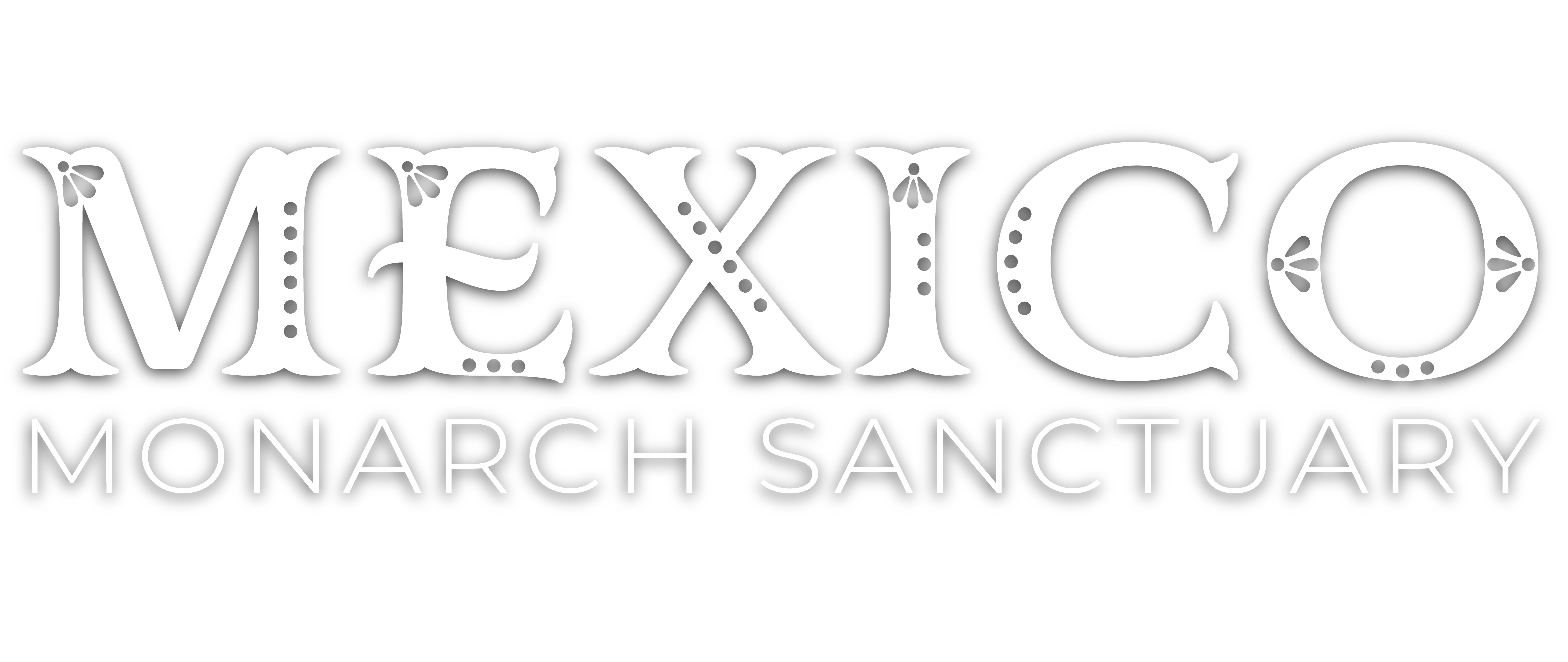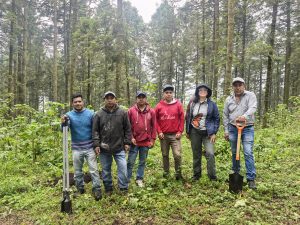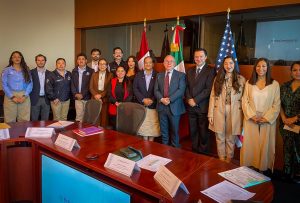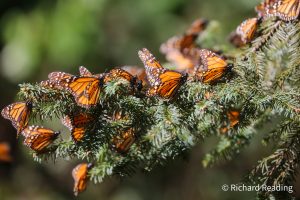Monarch Butterfly Biosphere Reserve
Historic Milestone: 100,000 Native Trees Planted to Safeguard the Monarch Migration
Butterfly Pavilion, in collaboration with the Government of Mexico and local community partners, has completed a historic reforestation project, Preservation of Critical Overwintering Habitat for the Migratory Monarch Butterfly in Central Mexico, to restore the wintering habitat of the migratory Monarch butterfly (Danaus plexippus).
Between July and September 2025, 100,000 native Oyamel fir trees (Abies religiosa) were planted across 32 reforestation sites in Mexico’s Monarch Butterfly Biosphere Reserve, one of the most critical ecosystems in North America. These new forests will serve as safe winter sanctuaries for millions of Monarchs that migrate up to 3,000 miles each year from Canada and the northern United States to central Mexico.
“Completing this reforestation marks a historic milestone for Monarch conservation,” said Shiran Hershcovich, Lepidopterist Senior Manager at Butterfly Pavilion. “This large-scale restoration has united communities, scientists, and governments across borders to protect one of nature’s most extraordinary migrations. Every tree planted represents a promise to the Monarchs and to future generations.”
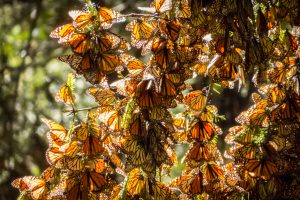
Why This Project Matters
The Monarch migration is one of the world’s most remarkable natural phenomena and one of its most at risk. In the last three decades, Monarch populations have declined by nearly 80 percent due to habitat loss, deforestation, and climate change.
The Oyamel fir forests of central Mexico, which provide the cool, moist microclimate Monarchs need to survive the winter, have been reduced to less than five percent of their original range. In recent winters 2024–2025, Monarch colonies occupied only 0.9 hectares of forest, the second-lowest number ever recorded. Scientists estimate that at least six hectares of suitable habitat are required to sustain the species.
By planting 100,000 native trees in degraded areas, Butterfly Pavilion and its partners have begun rebuilding this essential forest canopy, strengthening local ecosystems, stabilizing the microclimate Monarchs depend on, and protecting biodiversity for generations to come.
The U.S. Fish & Wildlife Service’s Proposed Ruling: Why It Matters More Than Ever
In December 2024, the U.S. Fish & Wildlife Service announced a proposed rule to list the Monarch butterfly (Danaus plexippus) as “threatened” under the Endangered Species Act. This decision underscores the urgency of ongoing, coordinated conservation efforts across North America.
If Monarch butterflies are officially designated as threatened, it would activate critical federal protections to help safeguard their survival. Large landowners and developers would be required to work with the U.S. Fish & Wildlife Service before undertaking any activity that could significantly impact Monarch habitats. It would also become illegal to intentionally or negligently harm or kill Monarch butterflies or to import or export them without permits.
Certain allowances would remain, such as exceptions for agricultural practices like the removal of milkweed, the Monarch caterpillar’s primary food source, when necessary for farming operations. Even so, these proposed measures represent a vital step toward reversing population declines and ensuring that this iconic species has the chance to recover and thrive.
Butterfly Pavilion’s completion of its large-scale reforestation in Mexico’s Monarch Butterfly Biosphere Reserve could not be timelier. By planting 100,000 native Oyamel fir trees across 32 sites, this project directly supports the same conservation goals outlined in the proposed federal ruling: restoring habitat, protecting migration corridors, and safeguarding pollinators that sustain ecosystems across borders.
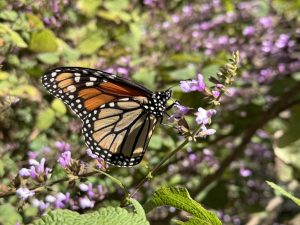
Project Achievements
- Restored 32 key reforestation sites within the Monarch Butterfly Biosphere Reserve
- Planted 100,000 native Oyamel fir trees to rebuild Monarch winter habitat
- Reforested degraded areas in the Sierra El Campanario and Sierra Chincua sanctuaries
- Created 20 native pollinator gardens at schools in the Reserve’s buffer zone to serve as living classrooms for students and families
- Supported sustainable local livelihoods by engaging ejidatarios (community landholders) in every phase of restoration
- Strengthened binational partnerships that bridge conservation science, education, and community action
“Standing in these restored forests today, it is clear that our collective efforts matter,” said Hershcovich. “Each Oyamel fir we planted strengthens the delicate chain that keeps the Monarch migration alive. This work gives hope that with continued collaboration, this remarkable journey will endure.”
Education and Community Impact
This project is not only restoring habitat but also cultivating stewardship. In Mexico, 20 school-based pollinator gardens now serve as hands-on learning environments where students learn about Monarch biology, pollinator conservation, and sustainable forest management.
In the United States, Butterfly Pavilion invites families, schools, and community scientists to take action through the Monarch Magic Pledge, planting native milkweed and pollinator-friendly plants, and by joining the Colorado Butterfly Monitoring Network, which collects vital data to protect local species.
Global Collaboration in Action
This achievement demonstrates what is possible when conservation transcends borders. The project, Preservation of Critical Overwintering Habitat for the Migratory Monarch Butterfly in Central Mexico, was made possible through a grant from the Association of Zoos and Aquariums Conservation Grant Fund and realized through collaboration among government agencies, nonprofits, and community partners.
Partners
Government of Mexico
Mexican Agency for International Development Cooperation (Agencia Mexicana de Cooperación Internacional para el Desarrollo, AMEXCID)
Secretariat of Environment and Natural Resources (Secretaría de Medio Ambiente y Recursos Naturales, SEMARNAT)
National Commission of Protected Natural Areas (Comisión Nacional de Áreas Naturales Protegidas, CONANP)
- Butterfly Pavilion, project lead and implementing partner
- Consulate General of Mexico in Denver
- Monarch Butterfly Biosphere Reserve Directorate
- Michoacán Forestry Commission (Comisión Forestal del Estado de Michoacán, COFOM)
- Alternare, a local conservation nonprofit
- Community landholders (ejidatarios) from six ejidos: El Rosario, Cerro Prieto, Los Remedios, El Calabozo Segunda Fracción, Santa Ana, and Jesús de Nazareno
This collaboration embodies the mission of the Association of Zoos and Aquariums Saving Animals From Extinction (SAFE) program, which unites accredited zoos and aquariums across North America to protect species through science, education, and community engagement.
The Importance of Monarchs
Monarch butterflies are far more than symbols of beauty. They are powerful pollinators that sustain ecosystems across North America. During their annual migration, they carry pollen between flowers, aiding plant reproduction and supporting countless other species that rely on those plants for food and shelter.
As sensitive indicators of environmental health, Monarchs reflect the broader challenges facing our planet, from climate change to habitat loss. Protecting their migration means protecting the balance of nature itself. Immediate and collaborative conservation action is essential to prevent the collapse of this extraordinary migration.
Cultural and Ecological Significance
The loss of the Monarch migration would not only be an ecological tragedy but a cultural one. For generations, the migration has symbolized endurance, renewal, and connection, values deeply rooted in the traditions of communities across North America, particularly in Mexico.
Each autumn, Monarch butterflies arrive in central Mexico around the beginning of November, coinciding with Día de los Muertos, or Day of the Dead. In Mexican tradition, their arrival is seen as the return of the souls of departed loved ones, a reminder of the connection between life, memory, and the natural world.
Beyond their spiritual and symbolic importance, Monarchs also sustain local economies. Ecotourism centered around the Monarch Butterfly Biosphere Reserve brings meaningful income to communities in the region, reinforcing the idea that protecting Monarchs also protects people, livelihoods, and cultural heritage.
What Comes Next
Butterfly Pavilion and partners will continue monitoring the newly planted forests to ensure healthy growth, support additional habitat restoration, and expand education and engagement programs that inspire long-term community stewardship.
The restored forests will stand as a living legacy of international cooperation and a testament to what is possible when people work together to protect the natural wonders that sustain life on Earth.
Get Involved
You can play a part in safeguarding the Monarch migration.
- Plant for Monarchs: Add native milkweed and nectar plants to your garden.
- Join Community Science: Participate in the Colorado Butterfly Monitoring Network.
- Support Conservation: Your gift sustains habitat restoration and education efforts worldwide.
Join us in Mexico to see these amazing butterflies: Learn More
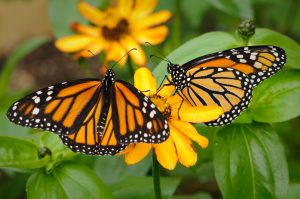
Learn More About CBMN
Thank you to our Partners:




